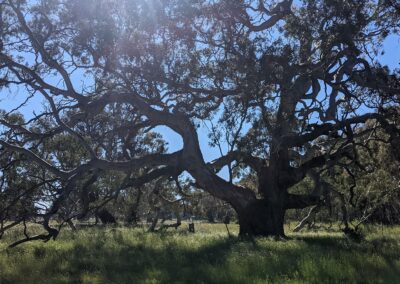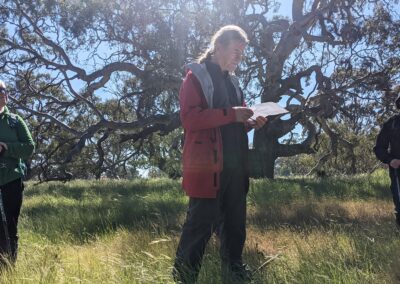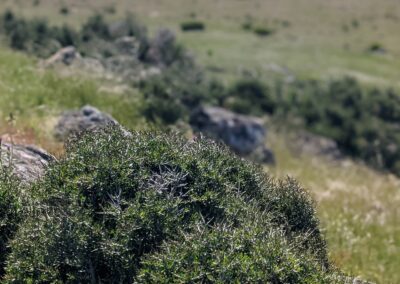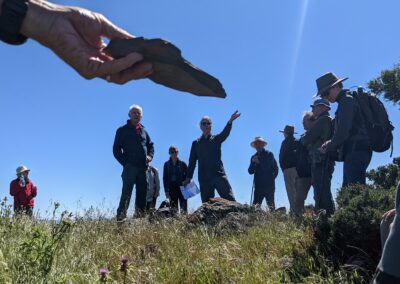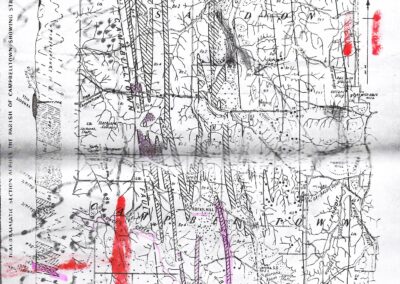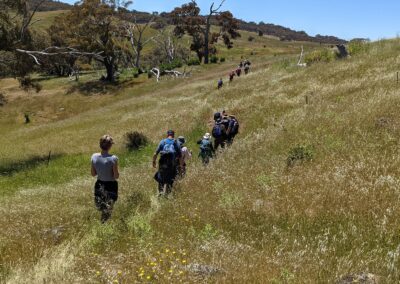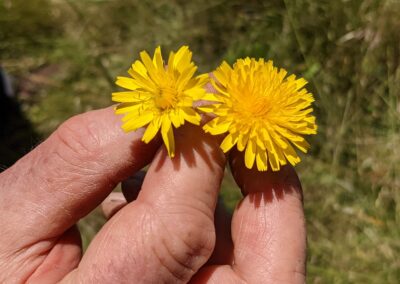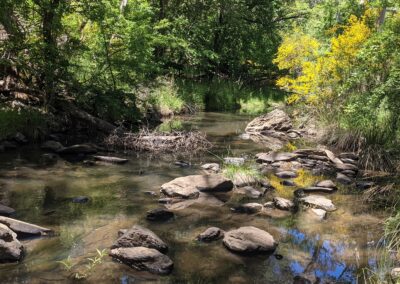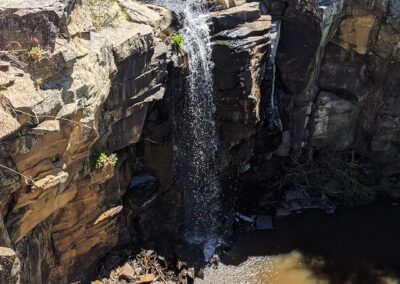
Wonders on the Volcanic Plains
21 November, 2021
There’s a lot to love that’s rare and special about our region’s volcanic plains; in the landscapes and the stories they hold; on our trails and off them. So, when the door of special opportunity opens, we should dash through it, which is how we found ourselves walking Wild Pig Gorge with renowned local ecologist and historian Barry Golding.
This was a unique 10km womble through red gum swamps, up volcanic hillsides and down into river gorges. It was enabled by special access through five private pastoral properties near Kooroocheang and along Joyces Creek.
The day’s walk was hosted by the Great Dividing Trails Association (GDTA) – which promotes deeper public understanding of the region’s natural and indigenous histories. Leading the walk was GDTA founder and geologist, Barry, and local geologist Stephen Carey. Their reading of the land – and their clear and passionate explanations – helped the 30-odd walkers (including three of us from CMRT) gain a richer experience of the plains.
On our walk we came across 300-year-old river red gums, shading the food ovens of First Nations people. These ovens, perhaps 3000 years old, would have used the fire and earth to roast mynong yams and some animals. The residue Barry found in the oven mounds was a distinctive blackened earth from high-termperature baking. In the same landscape, we loped too across gilgai – ephemeral billabongs naturally forming on the clay soils.
On the plains we passed rare, mature Tree Violet shrubs and Kangaroo grass. From the hill known as Stoney Rises, more than 80 peaks could be seen – many testimony to the plain’s ancient volcanic turbulence.
“All the plains consist of lava,” in 1840 wrote George Robinson, the erstwhile Aboriginal Chief Protector. “There are large water holes there and plenty of fish and kangaroos in abundance…(There is a) small plain…where the natives usually encamped…Women…digging murnong whilst the men went into the forest to hunt kangaroos, opossums etc. which are abundant.”
After the Rises, the walking group traversed high ridgeline basalt caps, and carefully descended the slopes which tumble precipitously into the gorge beside old growth Yellow Box and Manna Gums . The watercourse has various names including Joyces Creek, Deep Creek and McLachlan’s Creek – or more colourfully Wild Pig Creek, as named by the late Jack Sewell.
Ancient creatures also found their way into our local story. About 400 million years ago graptolite, an early form of collaborative life on earth – as Ballarat geologist Stephen Carey explained – we’re swimming around when the sedimentary rock started to sandwich together, trapping them in the layers. These layers can be seen see punching above the surface, typically running in north-south bands across much of the landscape in Central Victoria, today.
Another highlight was the natural 30-metre waterfall at The Falls property where we finished the walk near Kooroocheang. Our thanks go too to Barry, Stephen, GDTA’s Gib Wettenhal and other GDTA committee members for curating the walk.
The landscapes we traverse and the stories they tell will be a big part of CMRT’s trail-to-be. CMRT is already thinking hard about how best to tell these stories of place to enhance the trail experience.
If you’re inspired by walking and learning in our region, you can join GDTA here. You’ll be very welcome.


